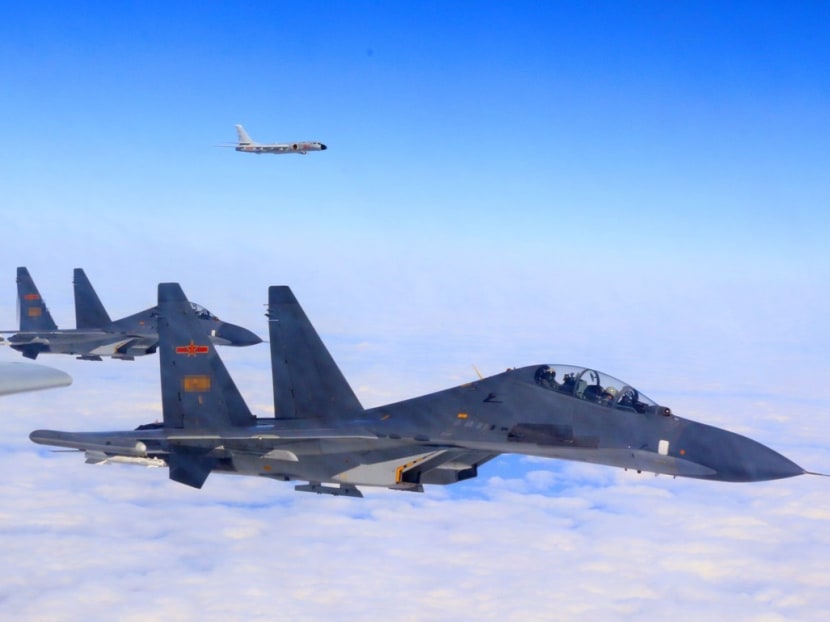China, Russia send message to North Korea with anti-missile drills in Beijing
BEIJING — China and Russia have begun a computer-simulated anti-missile exercise in Beijing as the two nations step up preparations against the North Korea nuclear threat.

China’s defence ministry says the two sides will work together to repel ballistic and cruise missile threats in simulated drills. Photo: South China Morning Post via Xinhua
BEIJING — China and Russia have begun a computer-simulated anti-missile exercise in Beijing as the two nations step up preparations against the North Korea nuclear threat.
The six-day joint air force drills are also aimed at countering United States alliances developing in East Asia in response to rising tensions on the Korean peninsula, analysts said.
Dubbed Aerospace Security 2017, the exercise started on Monday (Dec 10) and follows similar drills held in Russia in May last year.
China’s defence ministry on Monday said the drills were aimed at boosting cooperation against threats from ballistic and cruise missiles in the region. During the drills, the two sides would work together to repel such threats from third countries, the ministry said.
The exercise coincided with two days of ballistic missile tracking drills and information-sharing between the US, Japan and South Korea – their sixth such exercise – which also started on Monday.
The drills follow North Korea’s launch of the Hwasong-15 intercontinental ballistic missile in late November, which flew higher than any of its previous missile tests and which Pyongyang claimed could strike the US mainland.
Military experts said the drills in Beijing were intended to send a clear message to Pyongyang that China and Russia are preparing for a potential crisis.
“These exercises are aimed at preparing the two militaries as North Korea becomes more provocative and unpredictable — and with no sign that Pyongyang is likely to give up its nuclear programme and the US repeatedly threatening to strike the North,” Mr Li Jie, a military expert in Beijing, said.
The drills were also aimed at countering the US alliances that are building in the region because of the missile threat from North Korea, according to Dr Collin Koh, a military expert at Singapore’s Nanyang Technological University.
“This latest move is a response to the growing cooperation between the US and its allies in North-east Asia in the realm of missile defence — and respective build-ups of such capabilities as seen in Japan’s quest to buy Aegis Ashore (anti-missile system) and South Korea’s ... Terminal High Altitude Area Defence (Thaad) system,” Dr Koh said.
While Seoul and Washington insist that the Thaad US anti-missile shield is needed to help protect South Korea from nuclear and missile threats from the North, it is seen by Beijing as a security threat on its doorstep.
Both China and Russia have said it would not help ease tensions with North Korea.
Mr Ben Ho, a security analyst at Nanyang Technological University, said it was no coincidence that China and Russia were holding joint military drills at the same time as the US-led exercise.
“The exercise aims to signal to the US that Russia and China, too, have a key role to play in countering the regional missile threat,” Mr Ho said.
Beijing and Moscow have close military and diplomatic ties and have repeatedly called for a peaceful, negotiated solution to the North Korea nuclear threat. SOUTH CHINA MORNING POST






